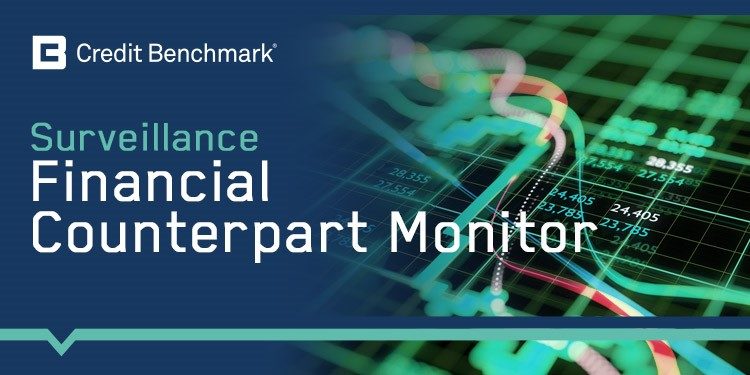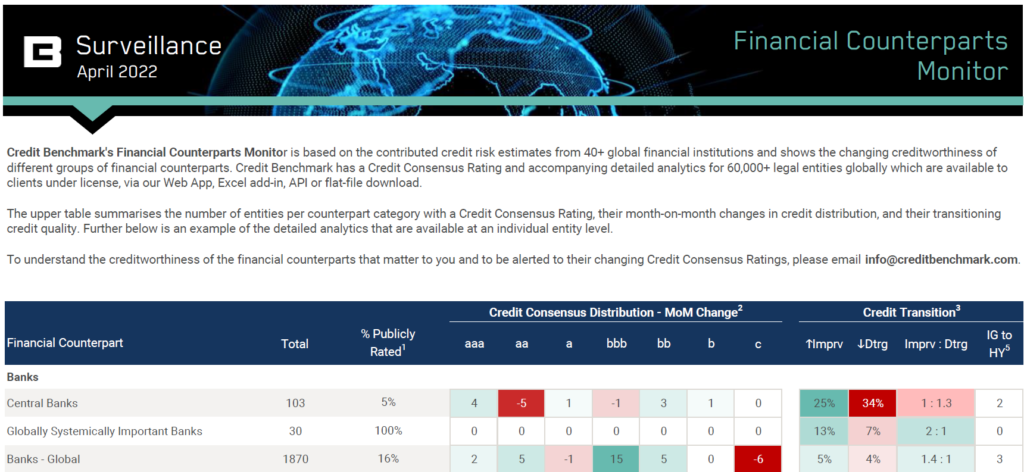
The news is, on the whole, good for Financials this month, with a few exceptions.
Among the banks, Globally Systemically Important Banks (GSIBs) again showed their strength, with a positive ratio of 2:1 improvements to deteriorations. Presumably much of this was driven by North American Banks which came out on top with a ratio of 3.3:1. Central Banks performed the worst this month, with a negative ratio of 1:1.3.
On the buy-side, Sovereign Wealth Funds mirrored the fortunes of their Central Bank counterparts, with double the deterioration versus improvement. Pension Funds were positive this month at 1.8:1, while Mutual Funds remained neutral.
Intermediaries also showed a mixed picture, with a stand out performance from Prime Brokers at five improvements to every deterioration. Broker Dealers shared the good news with a 3.2:1 ratio. Central Clearing Counterparties and Custodians / Sub Custodians were both in the red this month with net deterioration.

The Financial Counterpart Monitor from Credit Benchmark provides a unique analysis of the changing creditworthiness of financial institutions. The report, which covers banks, intermediaries, buy-side managers, and buy-side owners, summarizes the changes in credit consensus of each group as well as their current credit distribution and count of entities that have migrated from Investment Grade to High Yield.
The data, which is based on the credit risk views of Credit Benchmark’s contributing financial institutions, is also available at the legal entity level. Users of the data can monitor and be alerted to the changing credit consensus of their financial counterparts.